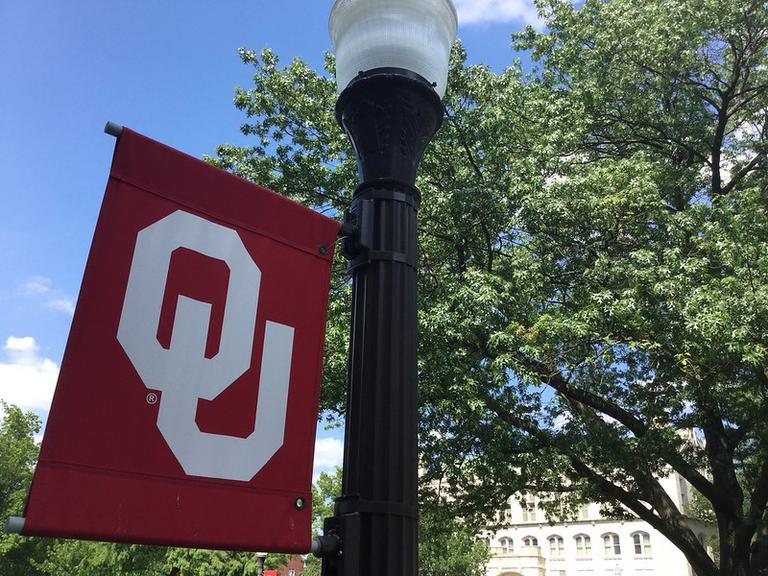
Higher Education
David Randall, Ph.D. | November 20, 2020
OU strategic plan will impose expensive, coercive diversity regime
David Randall, Ph.D.
On July 28, 2020, the University of Oklahoma Board of Regents approved a new strategic plan. The plan is made up of five pillars:
- Become a Top-Tier Public Research University
- Prepare Students for a Life of Success, Meaning, Service, and Positive Impact
- Make OU’s Excellence Affordable and Attainable
- Become a Place of Belonging and Emotional Growth for All Students, Faculty, Staff, and Alumni
- Enrich and Positively Impact Oklahoma, the Nation, and the World through Research and Creative Activity
OU wants to become a first-class research university. A laudable goal, to be sure—so long as the research is in industrial chemistry or agricultural genetics, and not in gender studies or social justice. Still, Oklahomans probably would prefer that OU’s first pillar be to provide a first-class education for students—in the tradition, say, of J. Rufus Fears, a former professor who then-OU president David Boren called “one of the greatest teachers in the history of our state.”
OU’s second pillar focuses on students—but not on actual classroom teaching. OU wants “mental health resources and services”; it wants the thinly disguised indoctrination of “global engagement,” “service learning,” and “experiential learning”; it wants “co-curricular opportunities” and “student organizational involvement” and “emotional growth.” Again, teaching is not really a priority.
The third pillar is to make a college education “affordable and attainable”—but that means OU wants to put the state legislature on the hook for its bills, not that OU will seek seriously to cut its costs in the way that former president James Gallogly had begun to do. The fifth pillar aims to give taxpayers some return on investment—and it will create no end of new staff positions and administrative units to unite “OU research and corporate partnerships in a thriving entrepreneurial ecosystem.”
But the diversity pillar is the one to take seriously. OU labels it “Become a Place of Belonging and Emotional Growth for All Students, Faculty, Staff, and Alumni.”
Now you may be accustomed to thinking of “diversity” in the benign sense of the word (having different races and points of view represented). But that’s not what today’s higher-education administrators have in mind. Diversity (see this helpful definition) means race and sex preferences and the apparatus of repression to quash all dissent to the diversity agenda. OU will make embracing “diversity, equity, and inclusion” just as important as becoming a first-class research institution—and it actually has the means to make that happen. The strategic plan spells out all the bureaucratic means by which OU will impose diversity, equity, and inclusion:
- Utilize race and sex preferences in admissions and hiring. (“Improve recruitment, hiring, and retention processes and adopt practices that promote the recruitment and hiring of historically underrepresented groups.”)
- Give diversity commissars power to enforce compliance on recalcitrant faculty and staff as they impose their race and sex quotas. (“Improve systems to support and assess evidence-based diversity, equity, and inclusion initiatives for faculty and staff.”)
- Give diversity commissars raises and promotions. (“Value and reward work that strengthens campus diversity, equity, and inclusion when assessing faculty, staff, and administrative offices for annual evaluations, promotion criteria, internal grants, and compensation.”)
- Subordinate the program to improve the research faculty to the diversity commissars. (“Align our strategies for supporting research and creative activity with our diversity, equity, and inclusion efforts.”)
- Force students to take a class in diversity indoctrination and use the tuition money to pay the salary of diversity commissars. (“Explore the development of an equity and inclusion course as part of the general education curriculum.”)
- Force faculty and staff to undergo diversity indoctrination sessions. (“Develop customized, high-quality training that is mandatory for all faculty, staff, and administrators on issues regarding diversity, equity, and inclusion in higher education.”)
OU has already imposed the mandatory diversity course and the mandatory diversity training. (Curiously, when OCPA journalist Ray Carter asked for access to the diversity training, OU declined to provide it.) The rest is sure to follow—because OU already has the power to impose diversity indoctrination on its students. When the strategic plan refers to things OU can do by itself, it is a fairly reliable guide to what OU actually will do.
Aristotle said that our choices define our character. OU’s strategic plan mostly refuses to choose, and instead catalogues every wish the OU bureaucracies desire. Read carefully, however, and one can discern OU’s real priorities:
- OU will impose an expensive, coercive diversity bureaucracy on the university, and subordinate all other goals—including liberty and education—to enforcing and propagandizing for race and sex preferences. It will impose these preferences even if they violate laws prohibiting sex and race discrimination.
- OU will spend taxpayer money to hire big-name research professors and their significant others, and then spend more money on a bureaucracy designed to make sure some of the taxpayer money trickles back to local businesses.
- OU will make sure its students get plenty of social-justice-activism experiences.
- OU will ask parents and taxpayers for more money, and will never reform itself so long as the money rolls in.
Given that so-called social justice is already rampant at OU and in Oklahoma higher education generally, Oklahomans eagerly await an explanation from the OU board of regents—Gary C. Pierson, Frank Keating, Michael A. Cawley, Phil B. Albert, Natalie Shirley, Eric Stevenson, and Anita Holloway—as to why the board approved this strategic plan.
[For more stories about higher education in Oklahoma, visit AimHigherOK.com.
David Randall, Ph.D.
David Randall is the research director of the National Association of Scholars. He earned a Ph.D. in history from Rutgers University, an M.F.A. in fiction writing from Columbia University, a master’s degree in library science from the Palmer School at Long Island University, and a B.A. from Swarthmore College. Prior to working at NAS he was the sole librarian at the John McEnroe Library at New York Studio School.